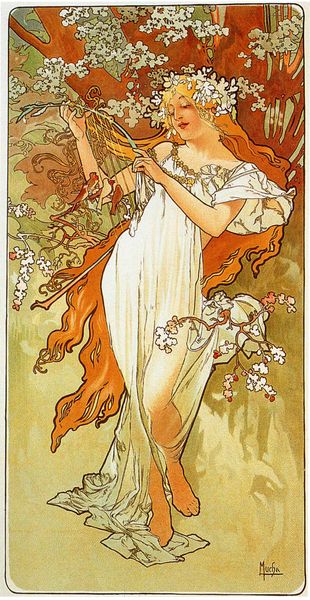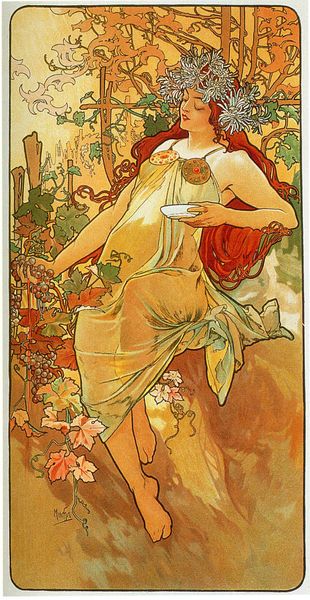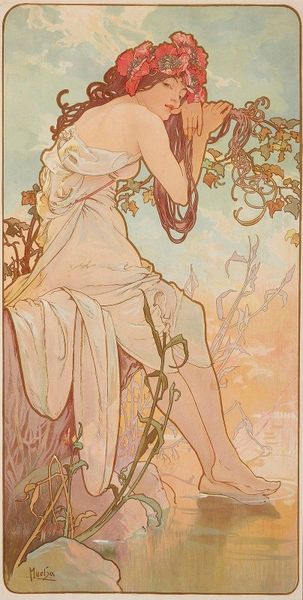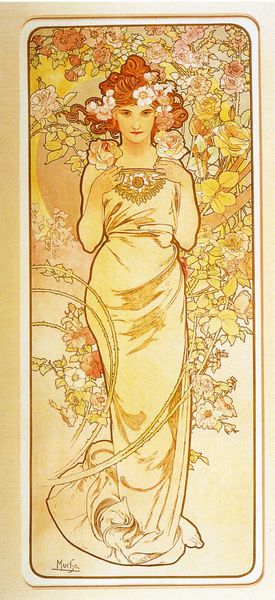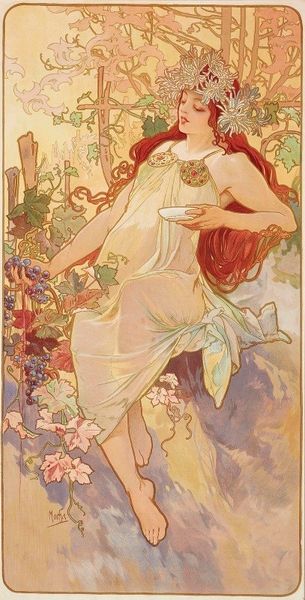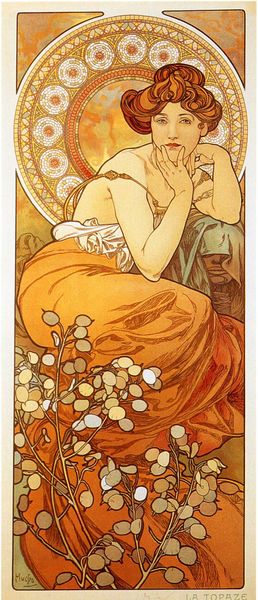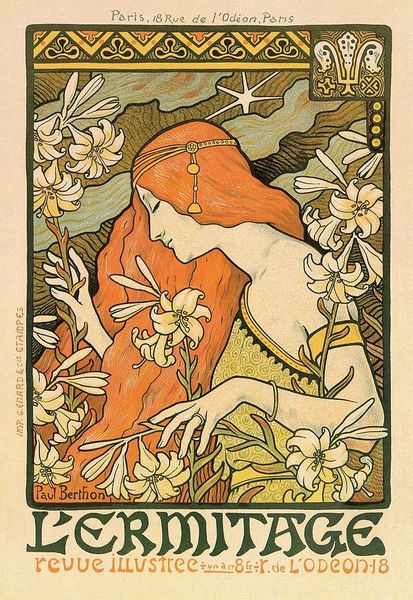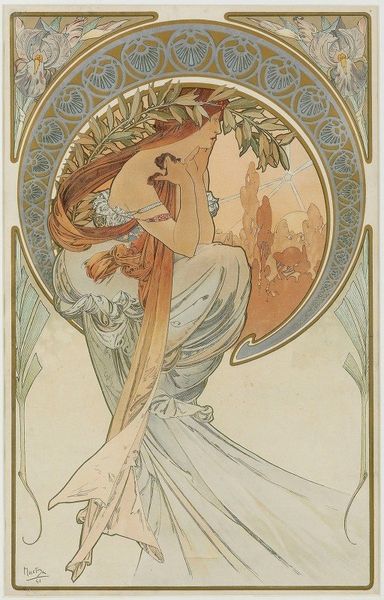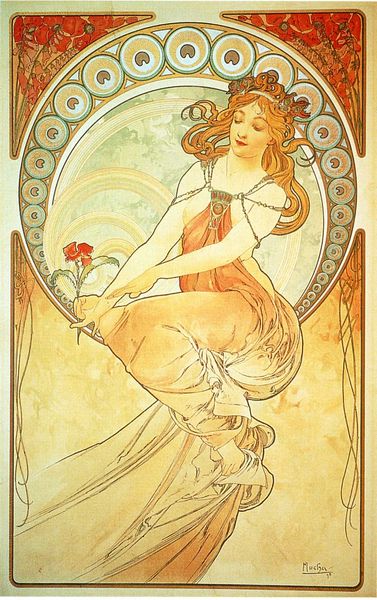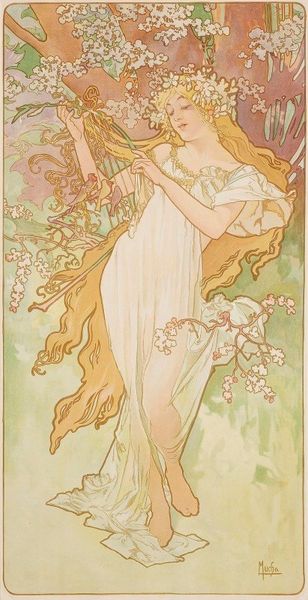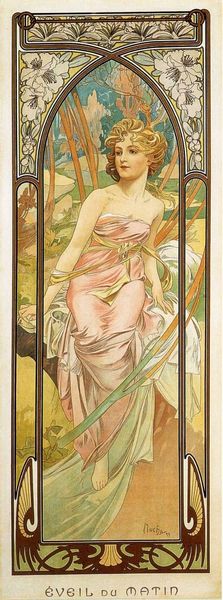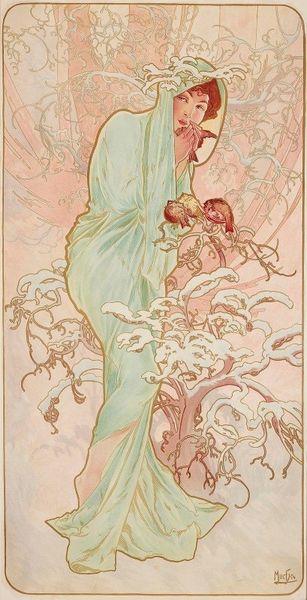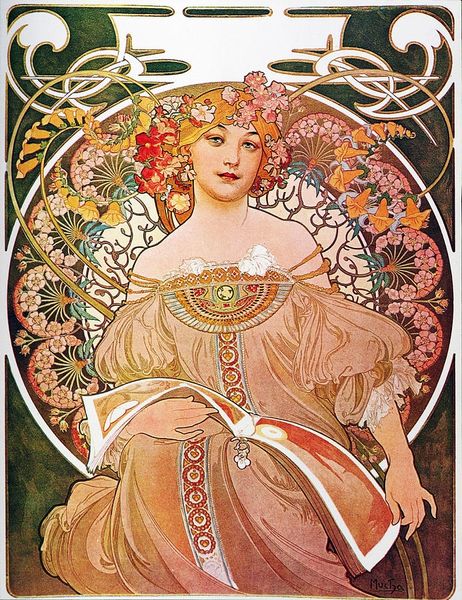
painting, print, poster
#
portrait
#
art-nouveau
#
painting
# print
#
landscape
#
flower
#
figuration
#
plant
#
naive art
#
symbolism
#
poster
#
female-portraits
Copyright: Public domain
Editor: Alphonse Mucha's "Summer," created in 1896, is simply gorgeous. I believe it was a print and painting, maybe even a poster, rendered in the Art Nouveau style. There's something about her wistful expression that's really captivating. What do you see in this piece, beyond just the aesthetic beauty? Curator: Indeed, the aesthetic is paramount, isn’t it? But let’s delve deeper. Mucha masterfully utilizes the female form to embody 'Summer', an enduring allegorical personification we find repeated across cultures. Look closely at the poppies adorning her hair. Poppies can symbolize sleep, peace, even death. Does their inclusion hint at Summer’s languid passing into autumn? Consider, too, the sinuous lines, the almost dreamlike landscape...how do these elements contribute to the overall emotional impact? Editor: I hadn’t really considered the darker symbolism. I was mostly struck by how decorative it is. But the poppies do give it a more complex feel now that you mention it. Curator: The "decorative" is integral; it speaks to Art Nouveau’s ethos of elevating everyday life through beauty. Think of those lines – they echo organic forms, connecting the woman to nature. She's not merely *in* the landscape but *of* it, an earthly embodiment of the season. Mucha is consciously weaving symbols that touch on universal anxieties about mortality but through a lens of beauty. Editor: So it's not just a pretty picture, it’s about bigger ideas about life, death and beauty... and our place in the natural world? Curator: Precisely. Mucha uses a familiar figure to address deeper cultural undercurrents, embedding meaning within what seems at first glance to be mere decoration. What we learn through this visual language! Editor: That’s fascinating! I definitely see this piece differently now. It feels so much more rich and complex. Curator: And now, hopefully, the image carries more cultural weight. That's the magic of iconography.
Comments
No comments
Be the first to comment and join the conversation on the ultimate creative platform.
